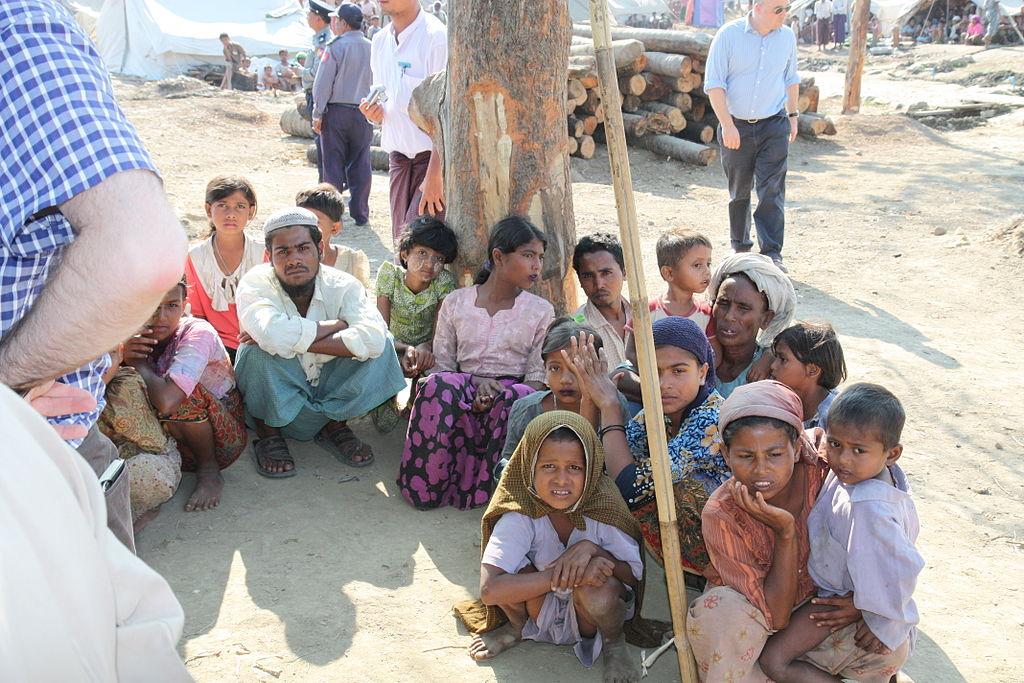ASIACALLING
From citizens and soldiers to stateless refugees: Rohingya memories
"As violence in Myanmar rages on, we trace the Rohingya story– from citizenship to stateless refugees - over a lifetime."

In Myanmar, it’s more than a year since Nobel Peace Prize recipient; Aung San Suu Kyi became Myanmar’s de facto leader.
She rose to power on a wave of popularity, and the promise to resolve internal conflicts that have plagued the country for decades.
But the violence rages on, especially in the country’s northern state of Rakhine, where the Muslim minority, Rohingya lives.
In October last year, Myanmar security forces allegedly killed as many as 600 Rohingya, and forced an estimated 40,000 to flee their homes in Rakhine. It’s just the latest chapter in a story of suffering that stretches over decades.
Reporter Kannikar Petchkaew traces the Rohingya story– from citizenship to stateless refugees - over a lifetime.
U Ba Seng and Daw Kin Lah were born in Rakine State, or Arakan as it was then known in 1952 and 1953. For them, Myanmar is home. Their families have lived in the Myanmar state of Rahine for generations. They have given birth there, played, worked, married, and died there.
U Ba Seng worked for a government ministry until 1991, and his father before him was also a civil servant. But the Myanmar government now considers them illegal immigrants.
U Ba Seng and Daw Kin Lah are Rohingya – a Muslim minority in the majority Buddhist nation of Myanmar.
“My parents were born in Arakan and were buried in Arakan soil. My grandparents were born there, they lived and worked in all their lives under the British colonial rule and after Burma independence in 1948,” Daw Kin Lah told me.
Many Rohingya arrived in Myanmar – or Burma as it was then known - from neighbouring Bangladesh and India under British colonial rule. But the group’s connection to the area stretches back centuries. Since Independence in 1948, the Muslim minority has faced ongoing conflict in Myanmar.
In 1949, Daw Kin Lah’s grandfather feared for their future in the new nation. So he wrote to the Myanmar Minister of Justice, asking to confirm their citizenship. He says they were assured their citizenship was safe. But it’s a promise that was not honored.
When she was just a child, Daw Kin Lah remembers seeing her family’s proud legacy destroyed.
“Even my father who was a police officer … in 1962 when the late dictator Ne Win confiscated all properties of the people, the authority didn't spare even his property. I couldn't control my tears by seeing the tension of my father even I was too young,” recalls Daw Kin Lah.
And that was just the beginning. U Ba Seng remembers watching new waves of violence crash over their family throughout his lifetime.
When he was 26, a large military operation was launched against Rohingya insurgents who were fighting against the government. But many believe all Rohingya became targets.
“I am not the only one Rohingya eyewitness who lived through the King Dragon operation in 1978,” said U Ba Seng. “There are many people in different towns and villages, also witnessed in torture, arrest and inhumanity during the largest scale operation against Rohingya,” he stated.
250,000 Rohingya fled to Bangladesh at the time. Soon after, in 1982, Rohingya were stripped of Burmese citizenship. More than 800 000 Rohingya in Northern Rakhine became stateless.
“I saw with my own eyes,” U Ba Seng recalled. “Teams of Burmese and Rakhine local authorities confiscated official ID cards from those who have them, arresting and taking away anyone with their hands cuffed, including young children who were not yet eligible for [an] ID card.”
By 1992, Daw Kin Lah and U Ba Seng had their own families, and were living in Rakhine when Rohingya were struck by another wave of violence. Restrictions on movement, education, and marriage were imposed.
Daw Kin Lah remembers seeing people leaving in despair. “I was pregnant at that time and I saw from my window how the people were fleeing at night and how their properties, houses were burnt down. I saw all these things with my own eyes.”
It was the final blow for Daw Kin Lah. “Since then I started thinking to leave the country, as I could imagine the situation for Muslims will become worse,” she said.
Hundreds of thousands of Rohingya again fled. It was the start of a decade long exodus that left Rohingya scattered across the globe. Daw Kin Lah and U Ba Seng are among them. They now live in the United Kingdom, as stateless refugees.
But hundreds of thousands of other Rohingya are living in camps in Bangladesh and Rakhine, where conditions are dire. Earlier this year a UN human rights investigation team found almost half those living in refugee camps in Bangladesh reported they had a family member killed or missing. Over half the women interviewed had experienced rape or other forms of sexual violence.
A peace conference between the Myanmar government and minority groups is scheduled for May, with the aim of ending the 6-decade long civil war. But many believe that prospects for the peace process are bleak, with dim hopes that this long story of violence can be brought to an end.
And in the meantime, families like Daw Kin Lah’s remain stateless and separated.
- Myanmar
- Rohingya
- Rakhine State
- Kannikar Petchkaew
Komentar (0)
KBR percaya pembaca situs ini adalah orang-orang yang cerdas dan terpelajar. Karena itu mari kita gunakan kata-kata yang santun di dalam kolom komentar ini. Kalimat yang sopan, menjauhi prasangka SARA (suku, agama, ras dan antargolongan), pasti akan lebih didengar. Yuk, kita praktikkan!